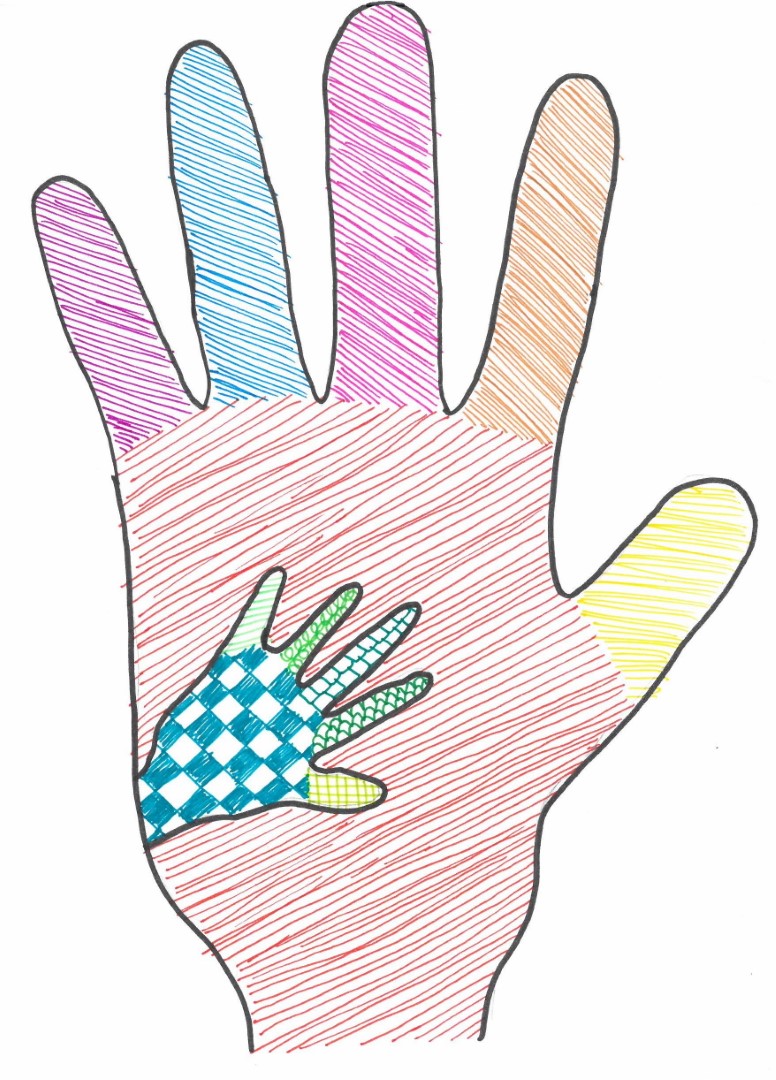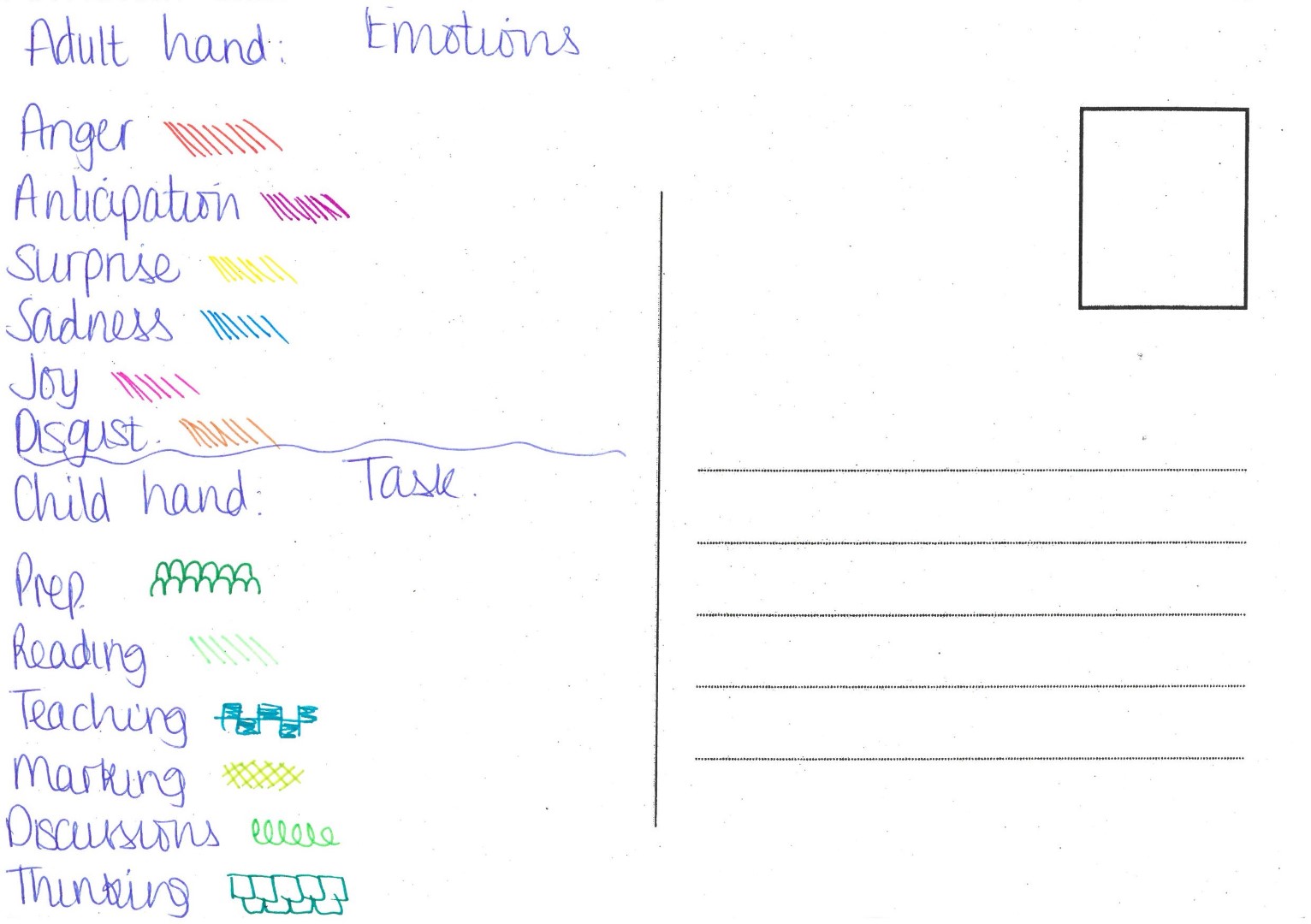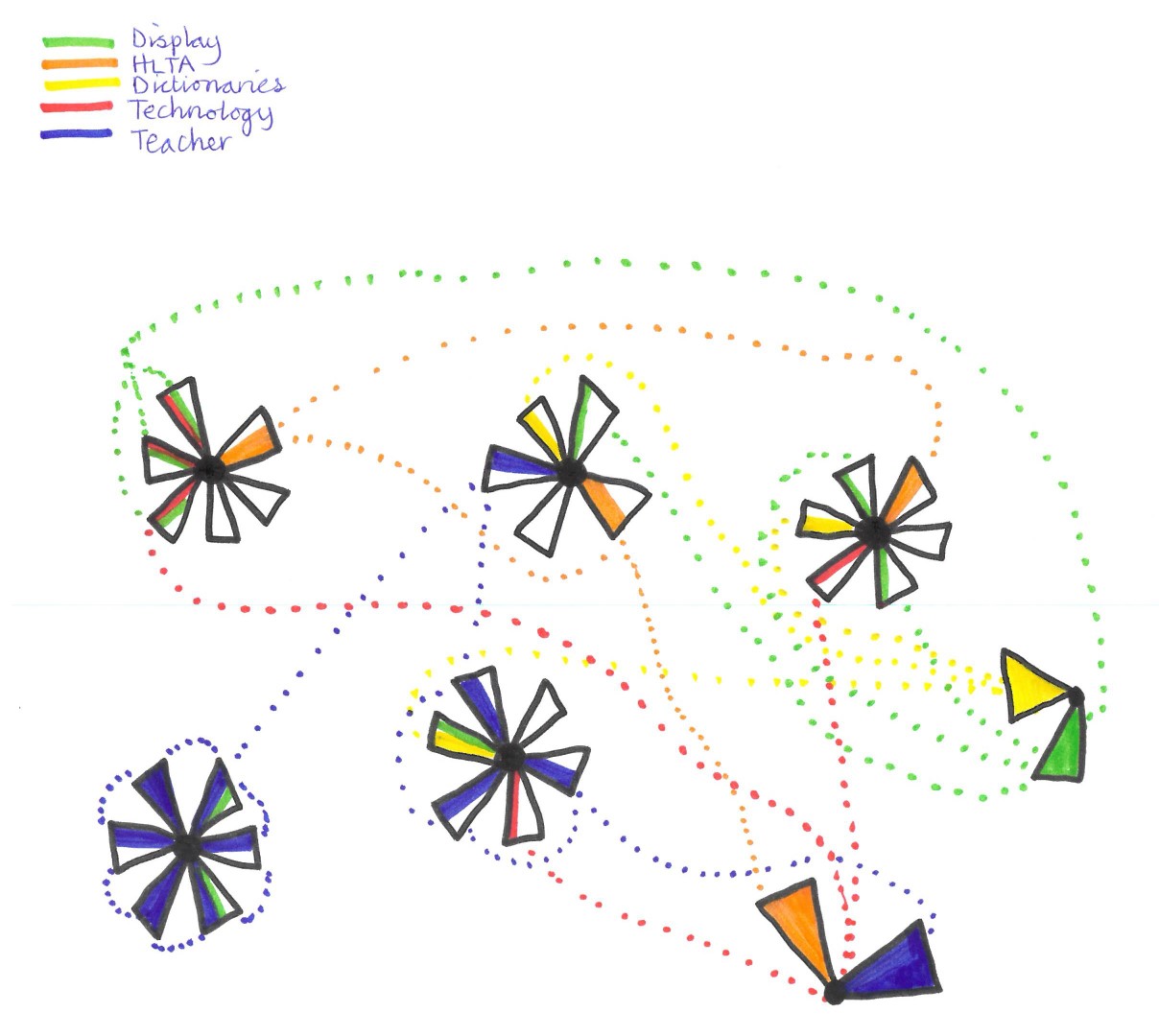DIAGRAMS
Children's reactions to independent reading
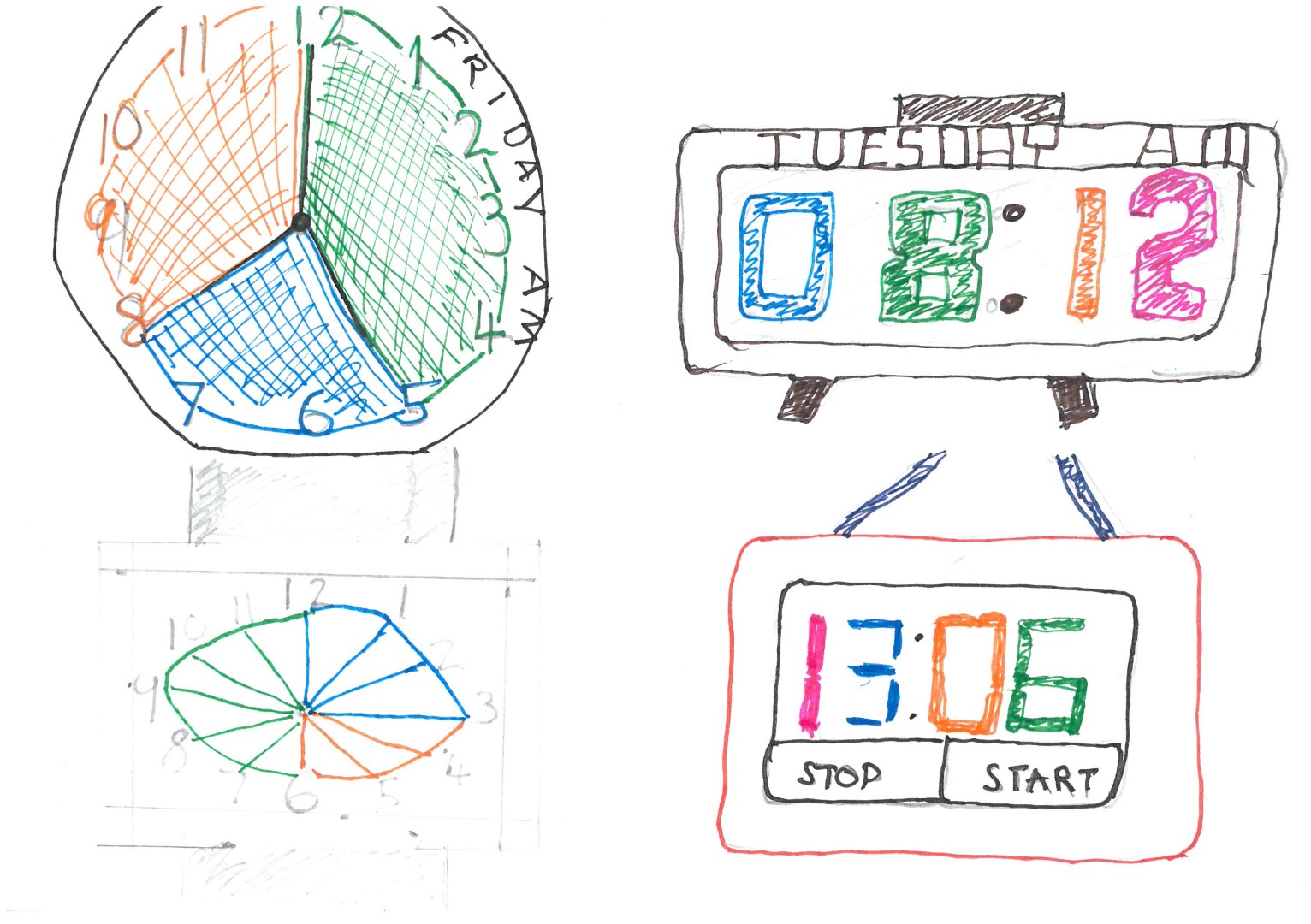
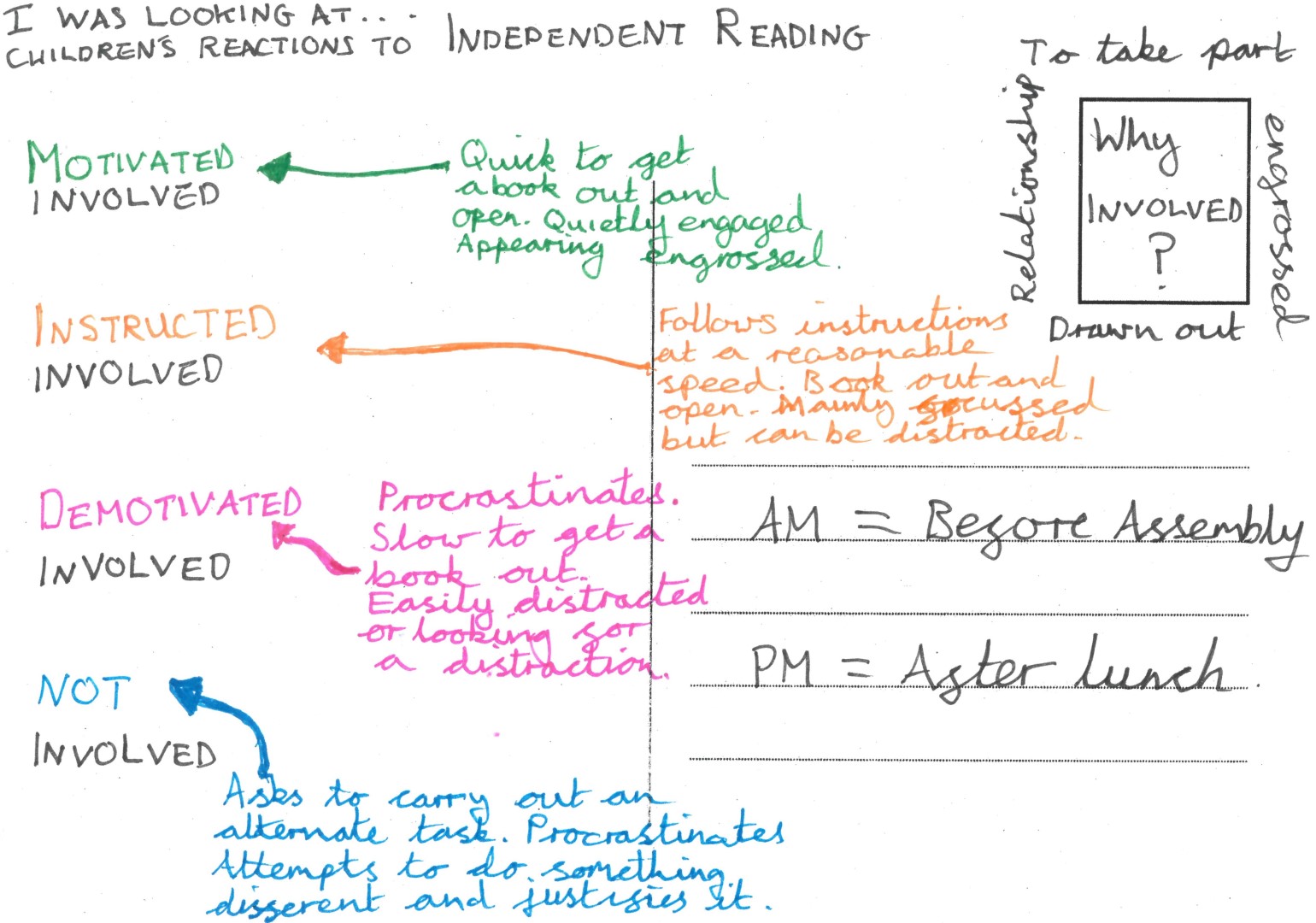
“So, yeah, so I kind of categorised them in to different groups of motivated involved, instructed involved, so you've kind of been told to do it and that's why you're doing it and you're very dutiful, which we have a lot of in my class, that's quite a thing of they're doing it because they've been told to do it and sometimes I want to see that they're doing it because they actually enjoy doing it or want to do it. A kind of demotivated reader and then just not involved at all. I will probably try to give them three, four minutes to get started and then to see where we were at.”
Where do children get their creative ideas from when writing?
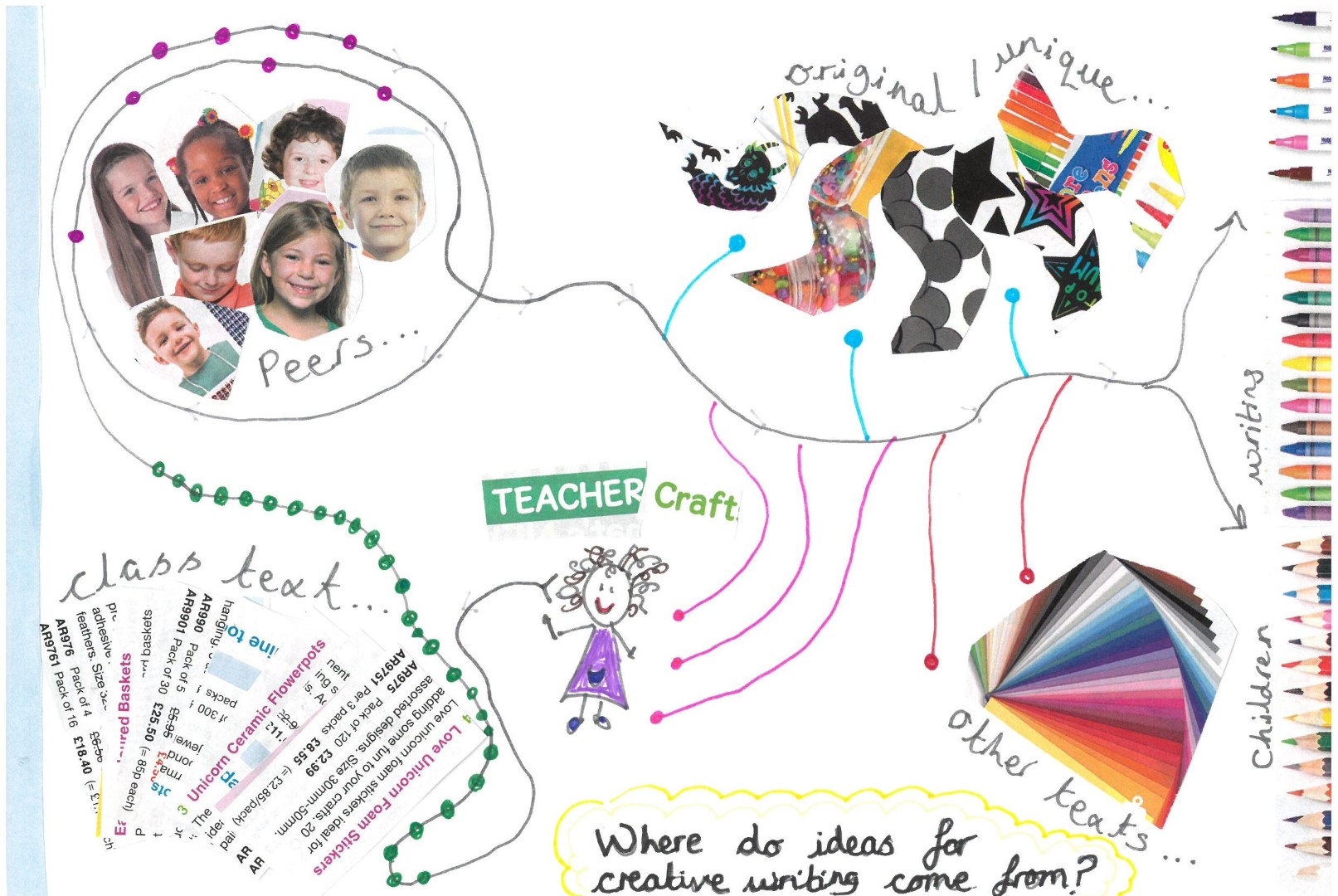
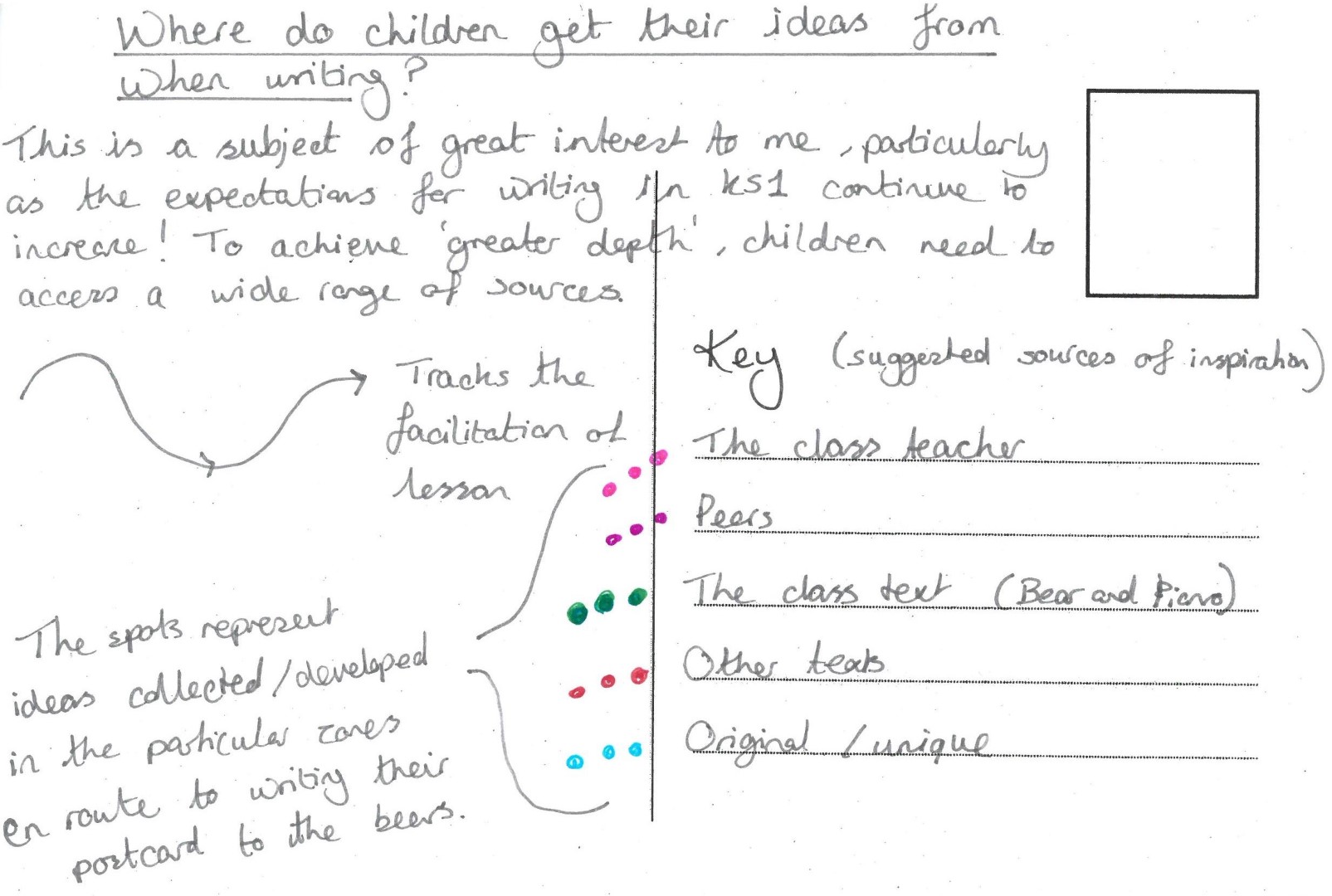
"So the way I've shown it is that out of a class of I think 29, 28 of them you could see that they'd used evidence from the text or language from the text in their writing. Because we shared so much a few of the children had magpied from each other as well and then there were a few children that came up with some really amazing ideas from their own life experiences that they could empathise with the bear and put that in as well and things that they'd obviously got from other text and things that I may have said as well, so I was the teacher in the middle, so the little spots are where they picked their ideas up from."
Where do we go to research?
“I did, 'where do we go to research?' Our topic is the Mayans, it's the first time we've taught it in school … I know this comes across as negative of the barriers that we face so we were able to do some research but, as I say – I grouped together what children chose because I tried to give them some options of what they could use to research them. I got them to record for me whether it was their first, second, third, some of them fourth and fifth choice because I wanted to know what would be their first choice. So you can see a lot of them chose to go on the internet. I did have an e-book on the Mayans that I'd saved that they should have been able to access from the iPads which was beautiful, it was like a book, you flick it and it makes little noises like the pages turning. I thought that would be lovely. We couldn't access it and that is so frustrating that that was going to be the main research part of this lesson on something that we've got very few resources on in school.
Actually I think it is interesting when you start to find about them and research them and I've got the enthusiasm for it but you just need more infrastructure almost around you to be able to deliver it to inspire that writing. I started off thinking, oh, it will be interesting to see what are the preferences for research but then kind of took that other route of, well, actually there's a lot of barriers to children being able to choose what they'd like.”
Mapping children's literacy activities
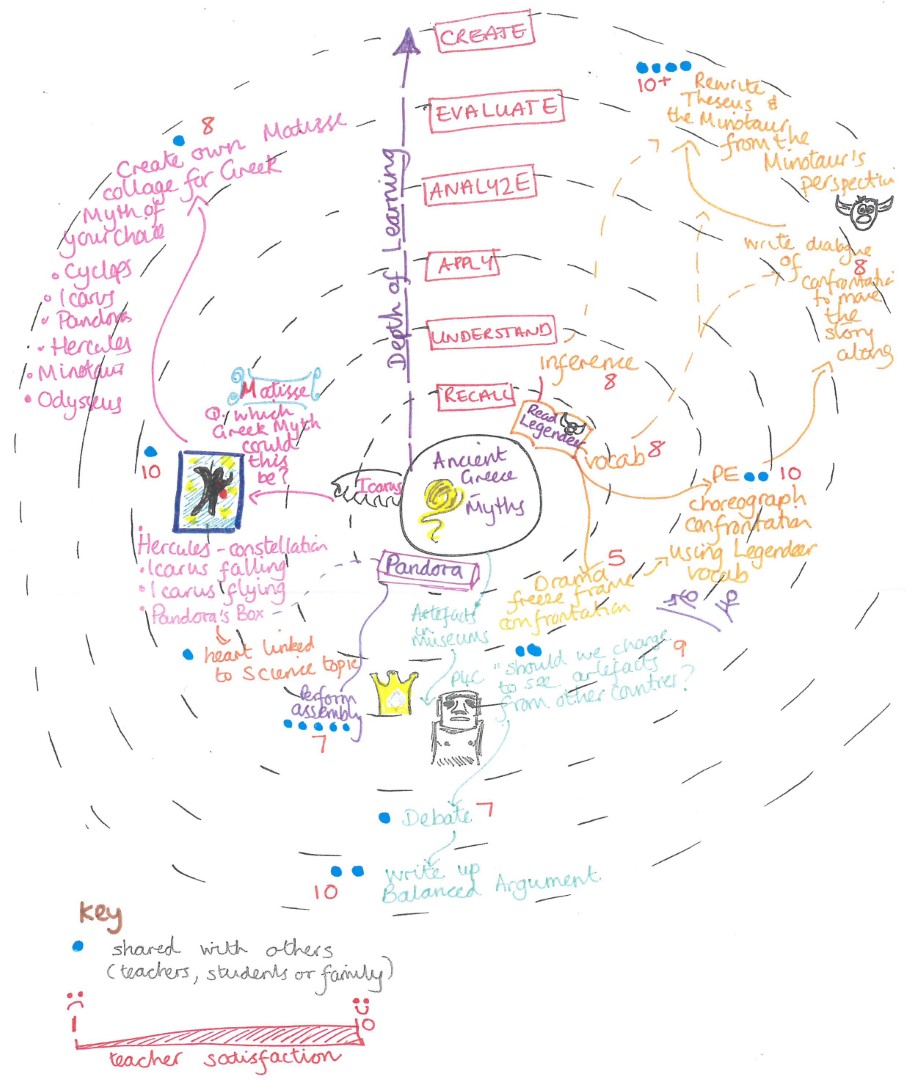
"I got some greater depth writing out of that I think for the Year 6s so really, really pleased with that and you can see that that's the one that I've really shared as well. Even when I'm at home marking it, my husband's getting fed up with me going, 'just listen to this one, listen to this opening paragraph'! But that's me as a teacher, I do share things out with people all the time."
How creative I am with respect to literacy
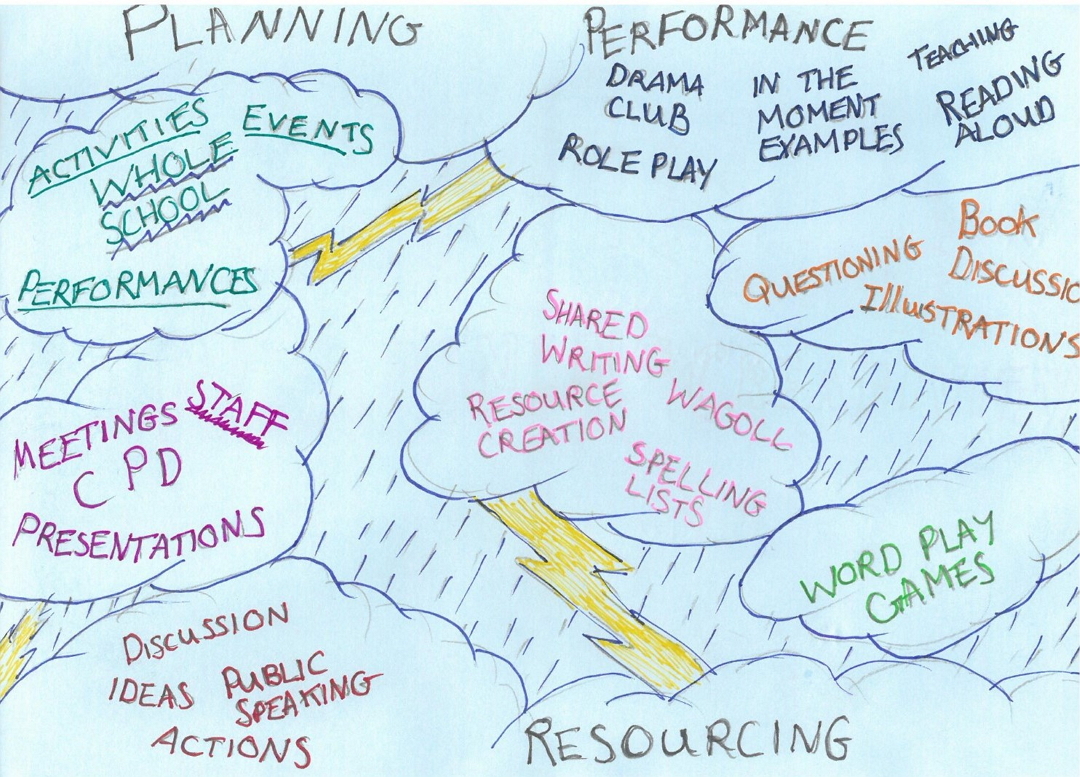
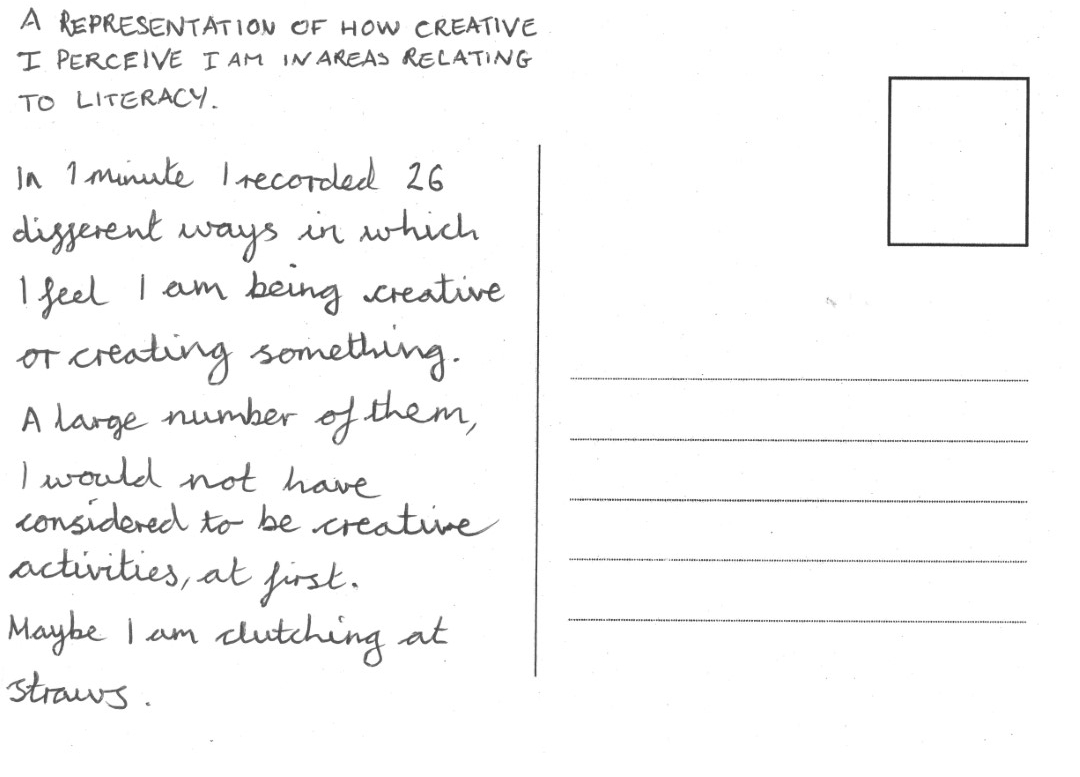
"What stood out to me is that very few of them are things that if you said to someone on the street 'Give me an example of being creative' they would ever say to you 'Running a staff meeting'. Or resourcing a lesson. So I think what it struck me as is that maybe teaching is a creative industry. Essentially a lot of what I do is performance in one way or another, there's a performative element to standing in front of a class, even if what I'm delivering is highly factual but you can feel really like you're not being creative or your role is not a creative role."
Feelings associated with different activities in which a teacher is involved
“The middle finger, so the next biggest one is thinking…My thinking time is that, whether I've read something and then thought how that would then apply to my class or reflecting on what I've taught, how that's gone, what I'd do differently next time so it's a bit of the raw category. A lot of time thinking. Preparation is this one here and discussion, so either with the literacy lead as a whole team or I've got a student in as well so discussions about what he's going to teach going forward and then the least amount of time has been spent on reading other things, so literacy journals or articles and marking which I'm very pleased to say!”
Time a teacher spends on different literacy-related activities
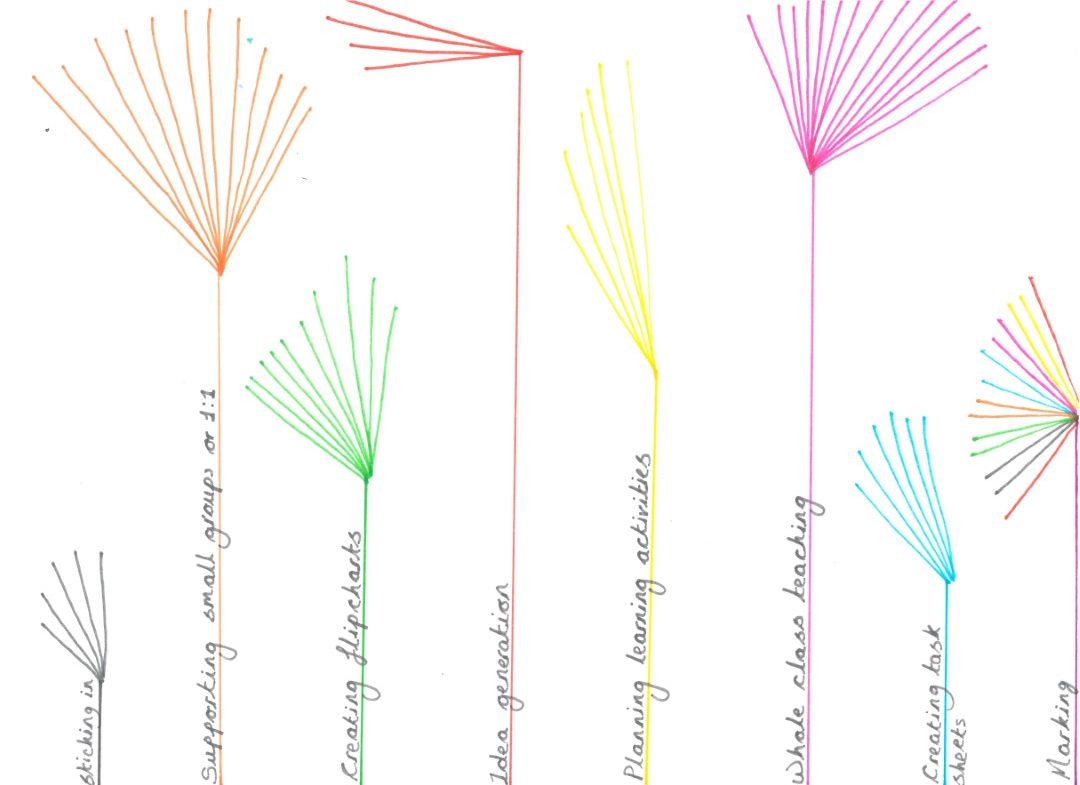
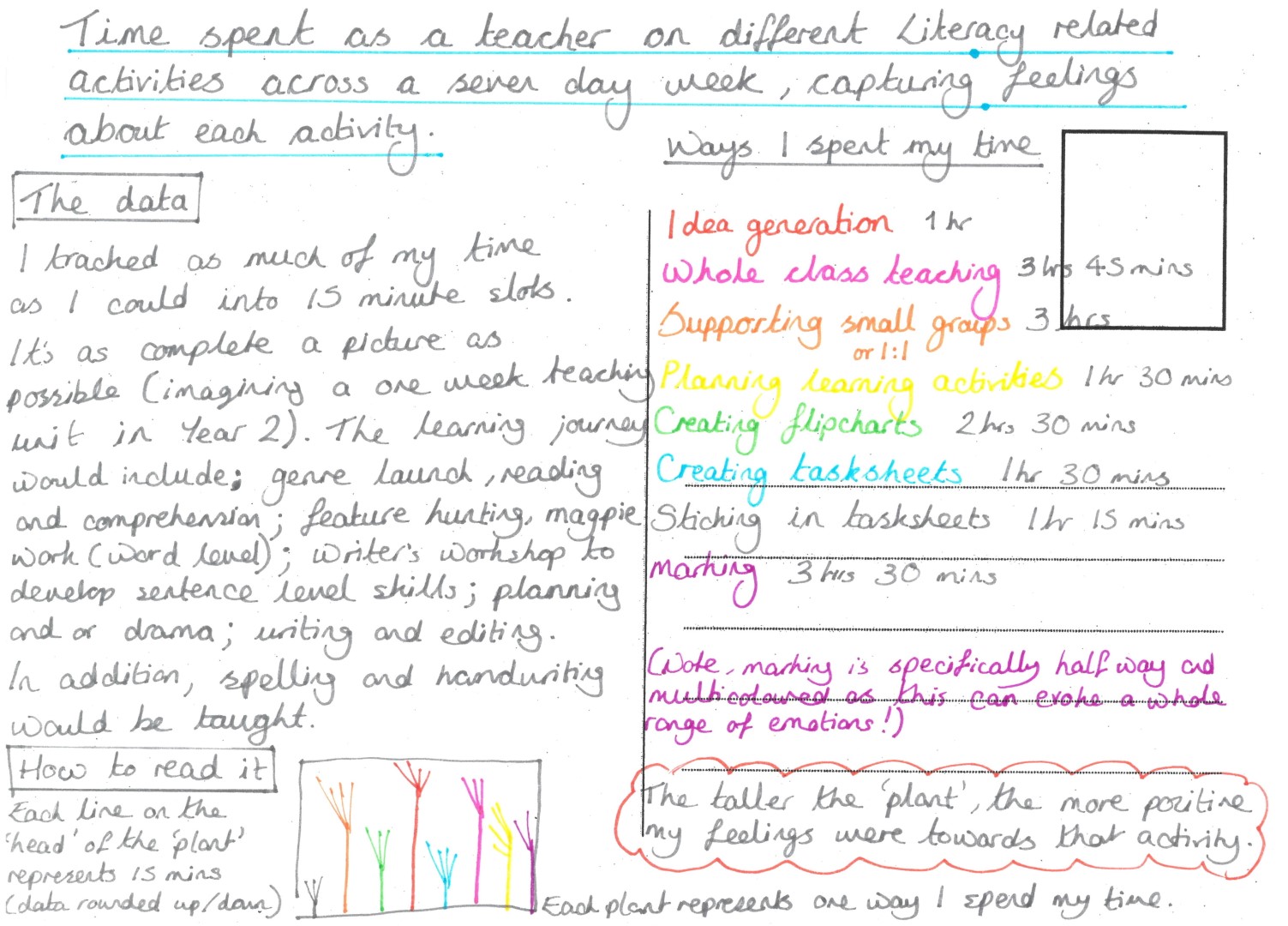
“So on mine each of the different, I'll call them plants, represents a different thing that I do connected to English and then each line represents 15 minutes spent on that activity. Then I thought about the feelings, so I decided warm colours would be more positive feelings and then cooler colours not so positive, then I thought it's easier if the higher up the plant grows the more positive I felt about it, so sticking sheets in books I have to do. (LAUGHTER.) That's in grey at the bottom because I don't really get much satisfaction from that, however generating ideas with my colleague is really exciting and thinking about where we're going to take them next. So, yeah, that's kind of the representation.”
Where do children go for support when writing independently?
“The floral representations are the tables of where the children sit and then the colours, I position myself near the front of the class so I'm the blue as the teacher and the children. I tried to track where they went and what they did but in terms of counting I think I might have failed a little bit there!
Quite a few of them which surprised me went for iPads and did use technology to go and use an online thesaurus or an online dictionary rather than go for a book which, like I said, that was interesting in itself. But similar to you I did noticed that if they went for the technology they didn't always go the most direct route to go and pick it up, they sometimes did a bit of an extra wander round to go and collect it. Some of them used the displays because obviously we've done previous works on different writing units that they then went and referred to to magpie ideas from but like I said, because it was independent it did allow me to just sit back and track where they went, so that's over the course of a lesson where the children went and what they accessed.”
Where do we go when creating poetry?
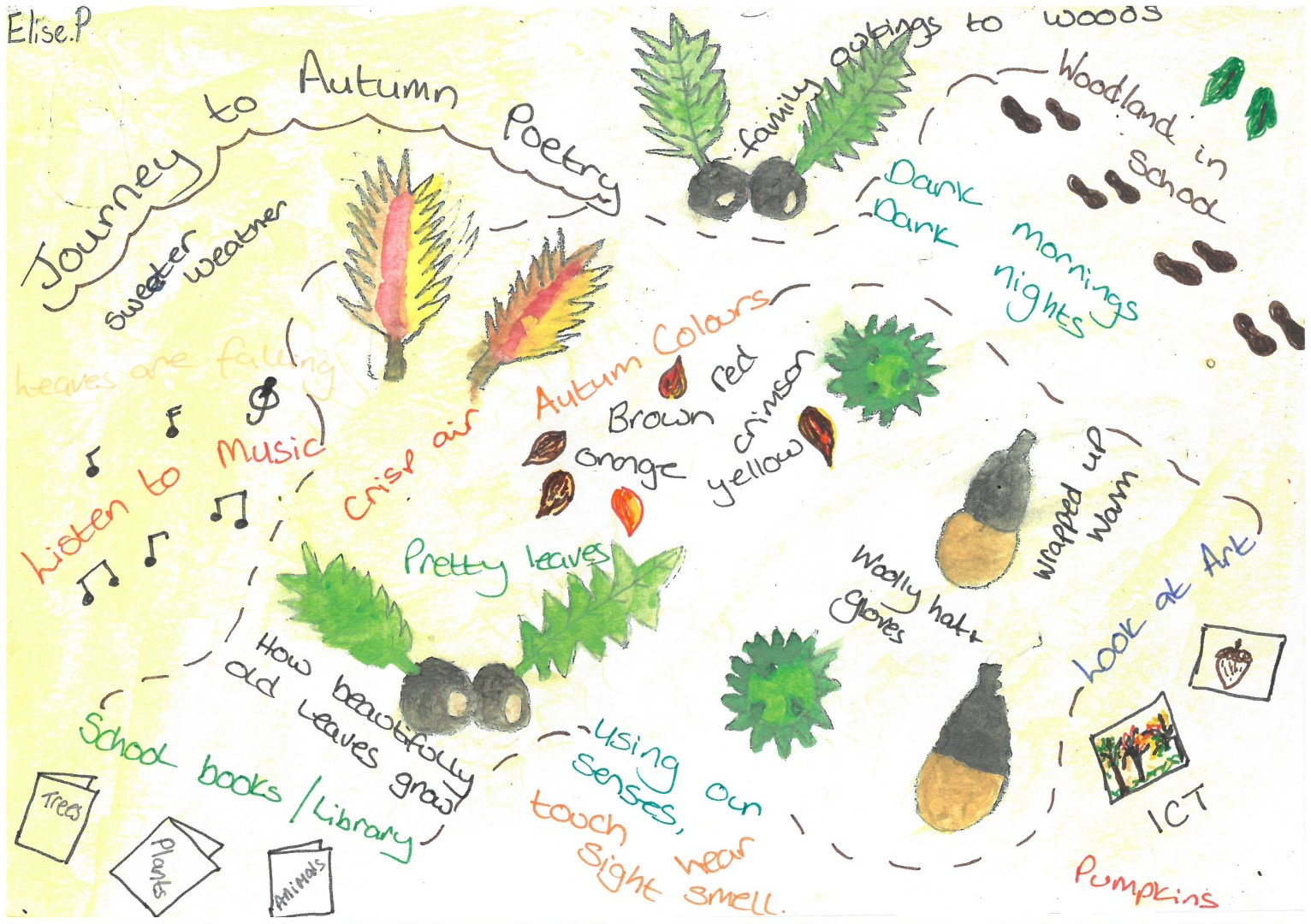
“Well I did a journey to autumn poetry and it was how we got to the final destination of a poem and physically where we went and maybe technologically where we went. So we went to the woodland in school, concentrated on the senses, touching, hearing, what you can see, what you can smell.
Well, on this one, you see there's footprints and these are all where we went, the woodland in school, looking at art, using our senses. It's like a path and some of the words we came up with. This one, this is a child's poem and I've just really, I've drawn a leaf to represent children, an acorn to represent adults as to who did what.”
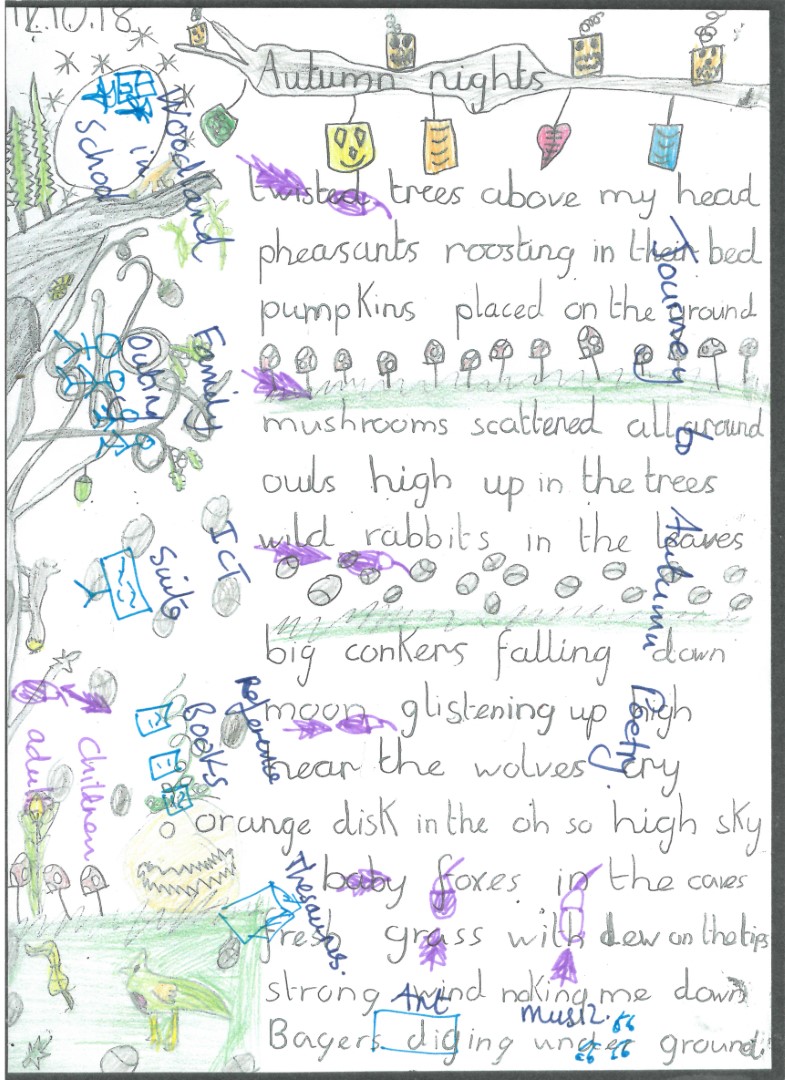
Inspirations in and out of the classroom
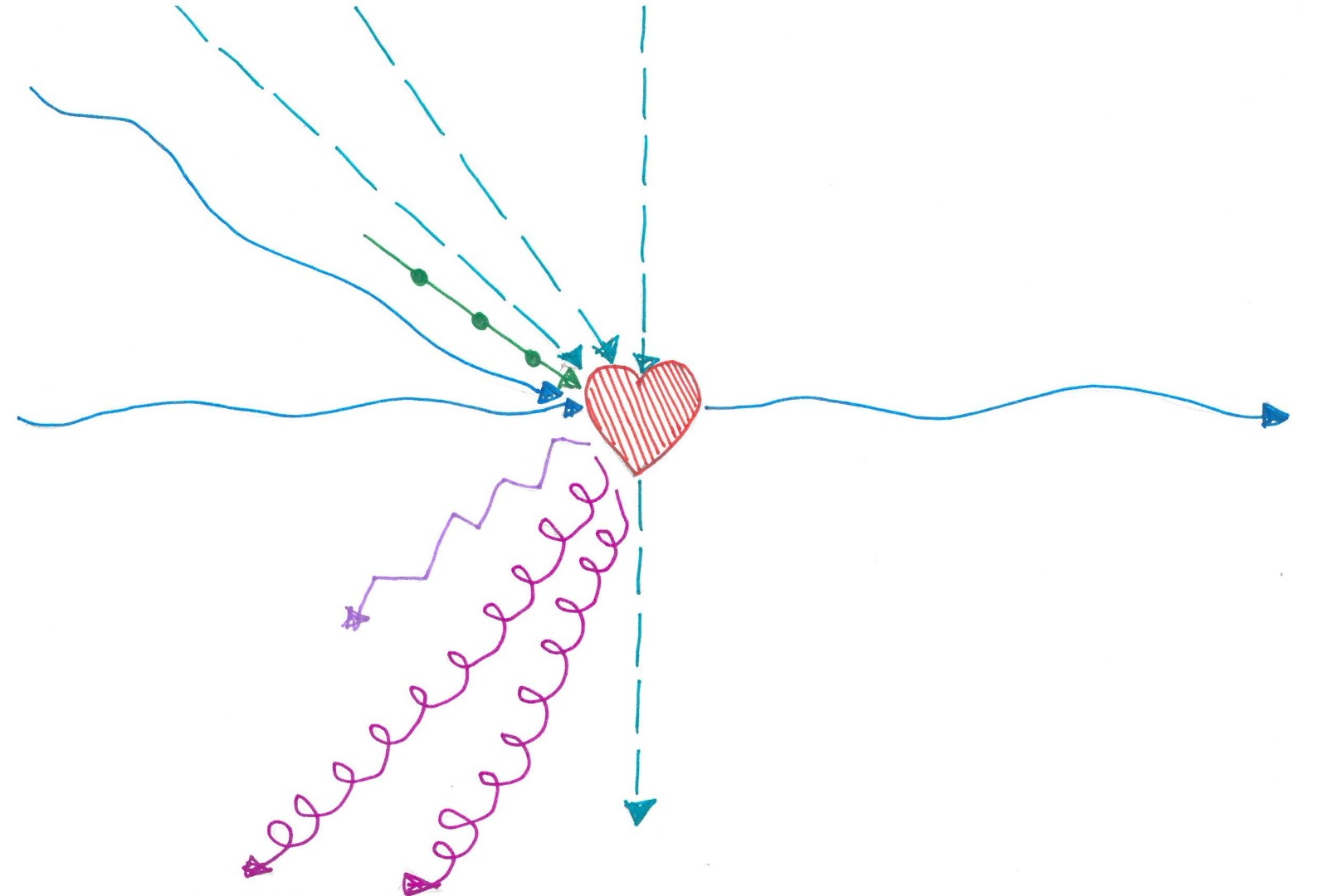
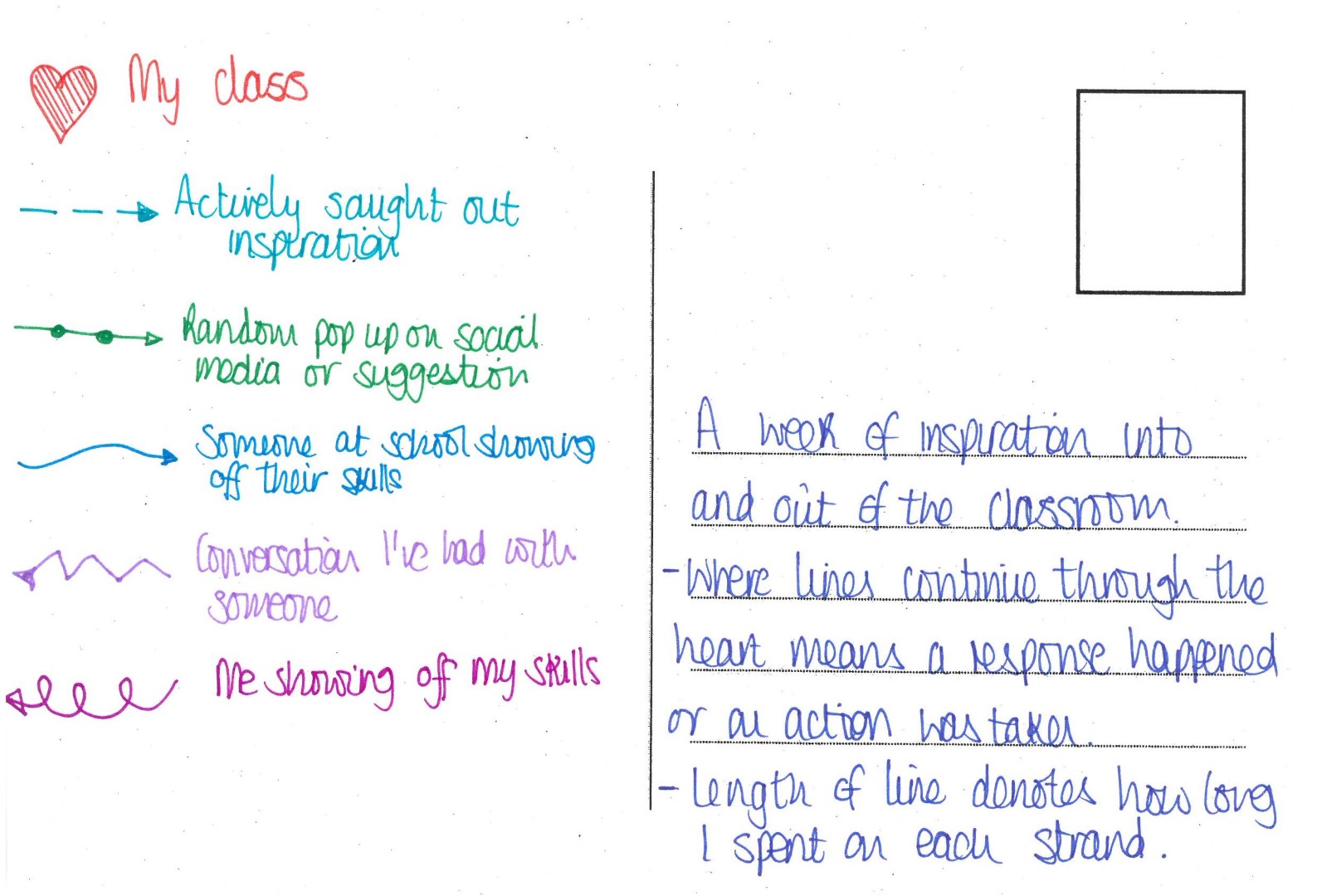
“I was looking at inspirations in and out of the classroom, so what inspired me particularly in literacy and then anywhere where I felt inspiration has been passed off to other practitioners. So the heart is the classroom. This is inwards. There are a few that crossed straight through which is me thinking, well, there's been inspiration in but then I've gone and done something else with it afterwards so there's been an action to follow up. So the dash arrows, they're things that I've actively sought out either on the internet or by asking other people. The wavy lines are someone at school showing off their skills and I've thought, yes, I'm having that in my own!”
Children's reactions to a story
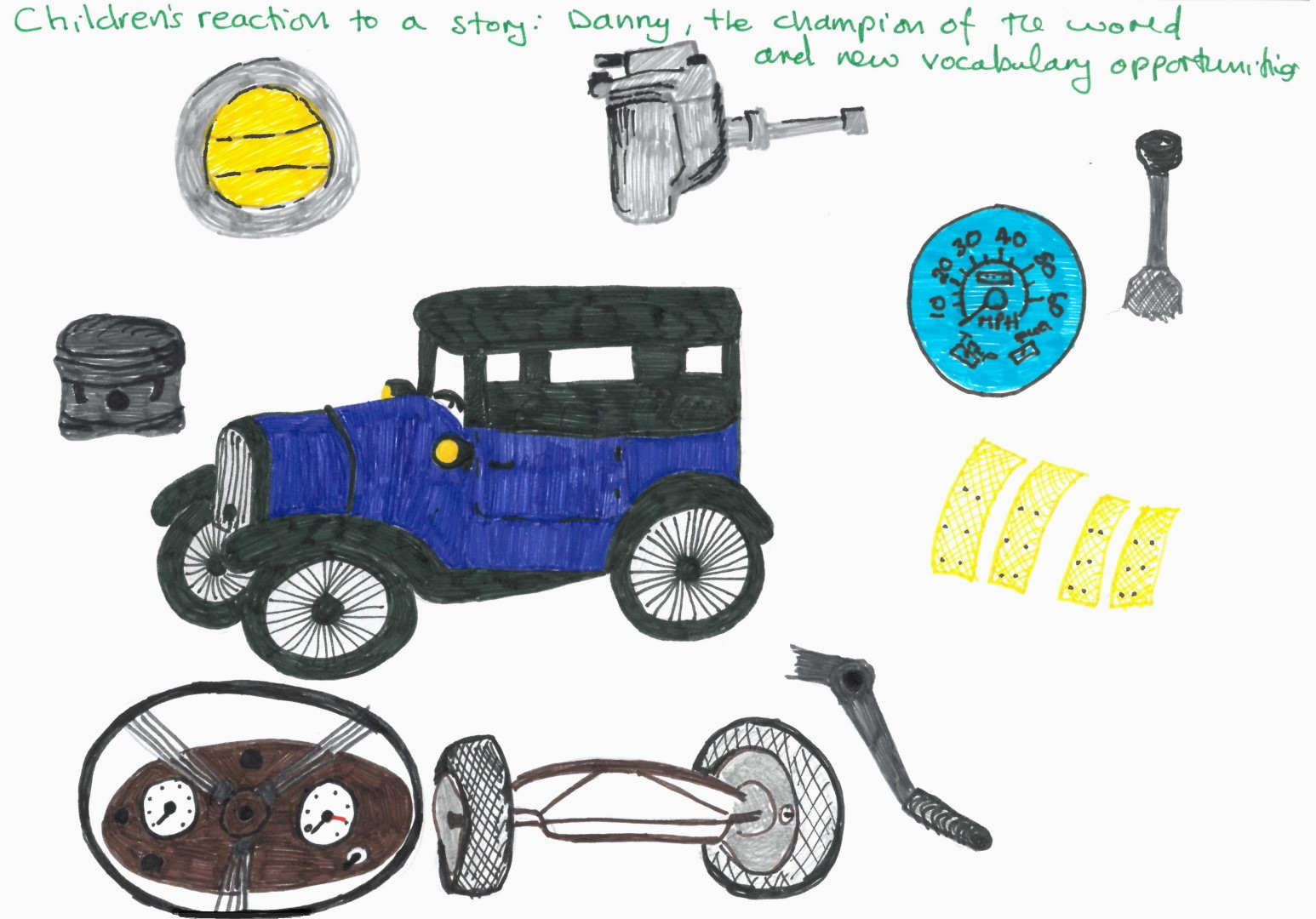
"So that was what I was looking at, trying to look at how a story can offer new vocabulary and learning … I measured the amount of times I was stopped to explain a term. So I'd be reading the book and they'd say, 'Miss, what's a carburettor? What's an axle? What's a piston? What's a dashboard? What's a speedometer?' So as I was stopped I'd then explain what these different things were. … So it's just measuring really - how from a book and the children asking you about what these words mean, that you can explain lifestyles really."
Creativity through group story telling
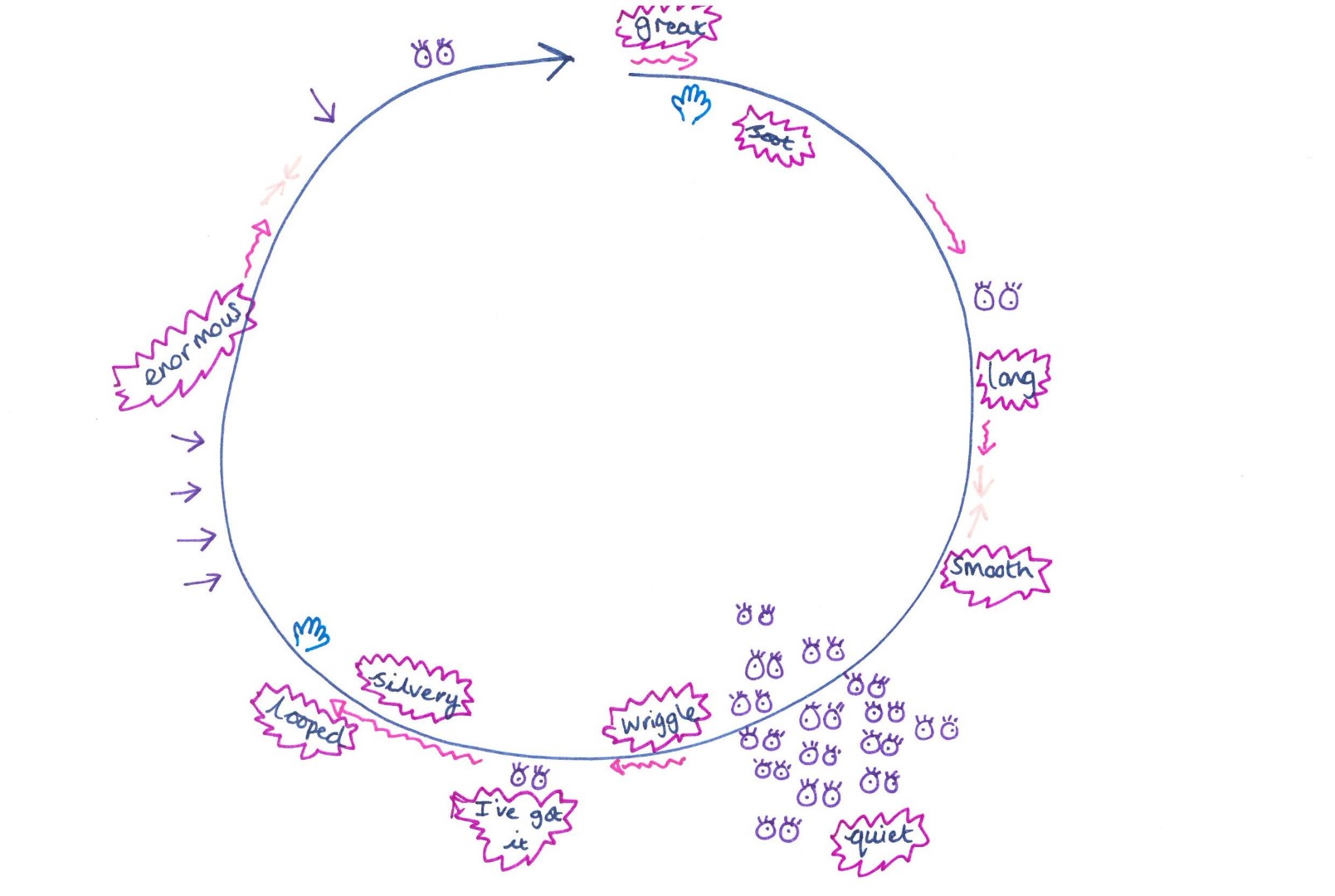
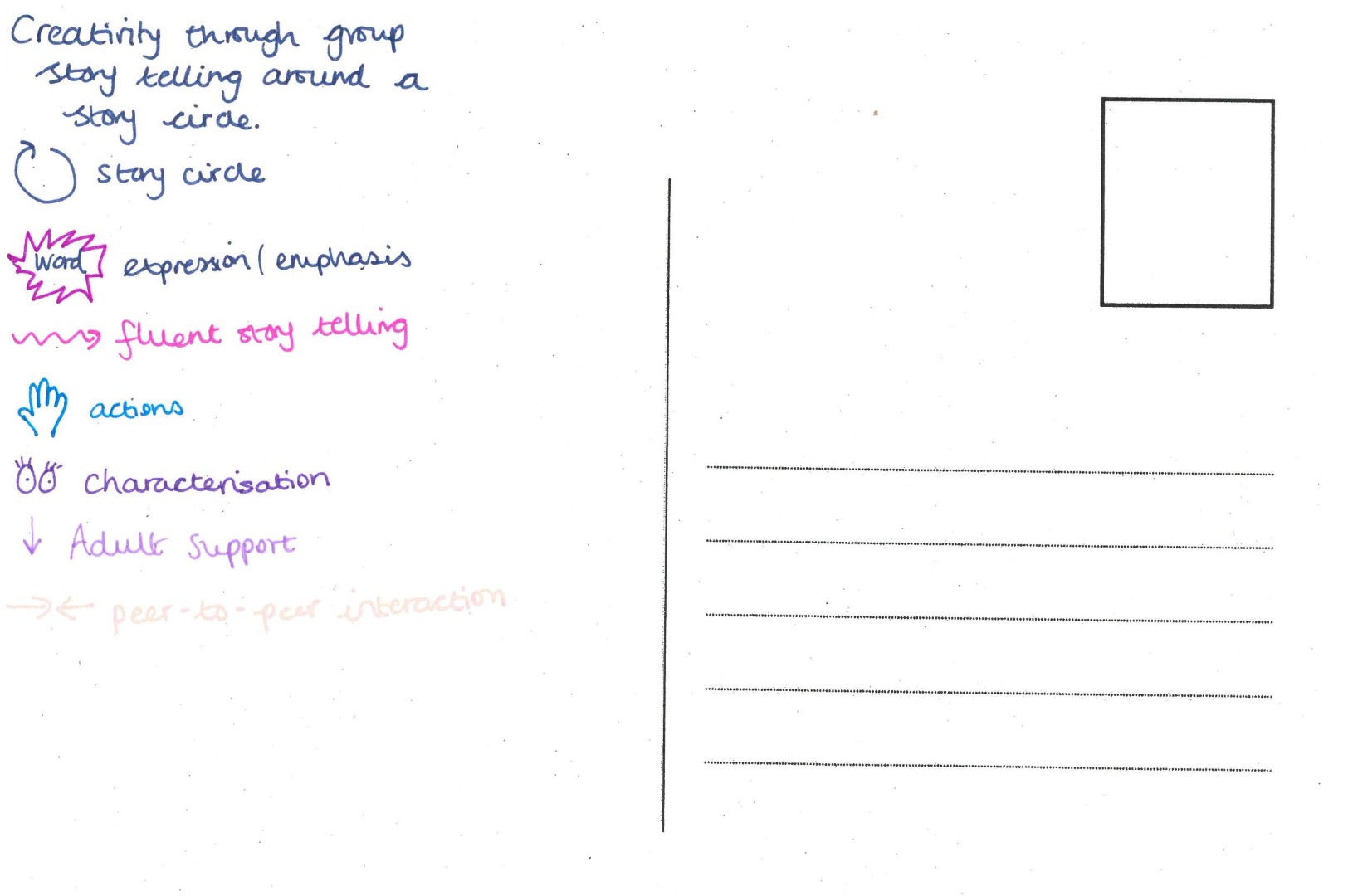
"So we've been doing 'The Snail on the Whale' by Julia Donaldson and we'd been reading lots and exploring lots and then we were retelling it person by person, passing it round using some vocabulary from the text …
They're in Year 2 so that's a big part of it, is kind of retelling and using vocabulary that you've been given, so I was trying to look for how they could show their creativity."

